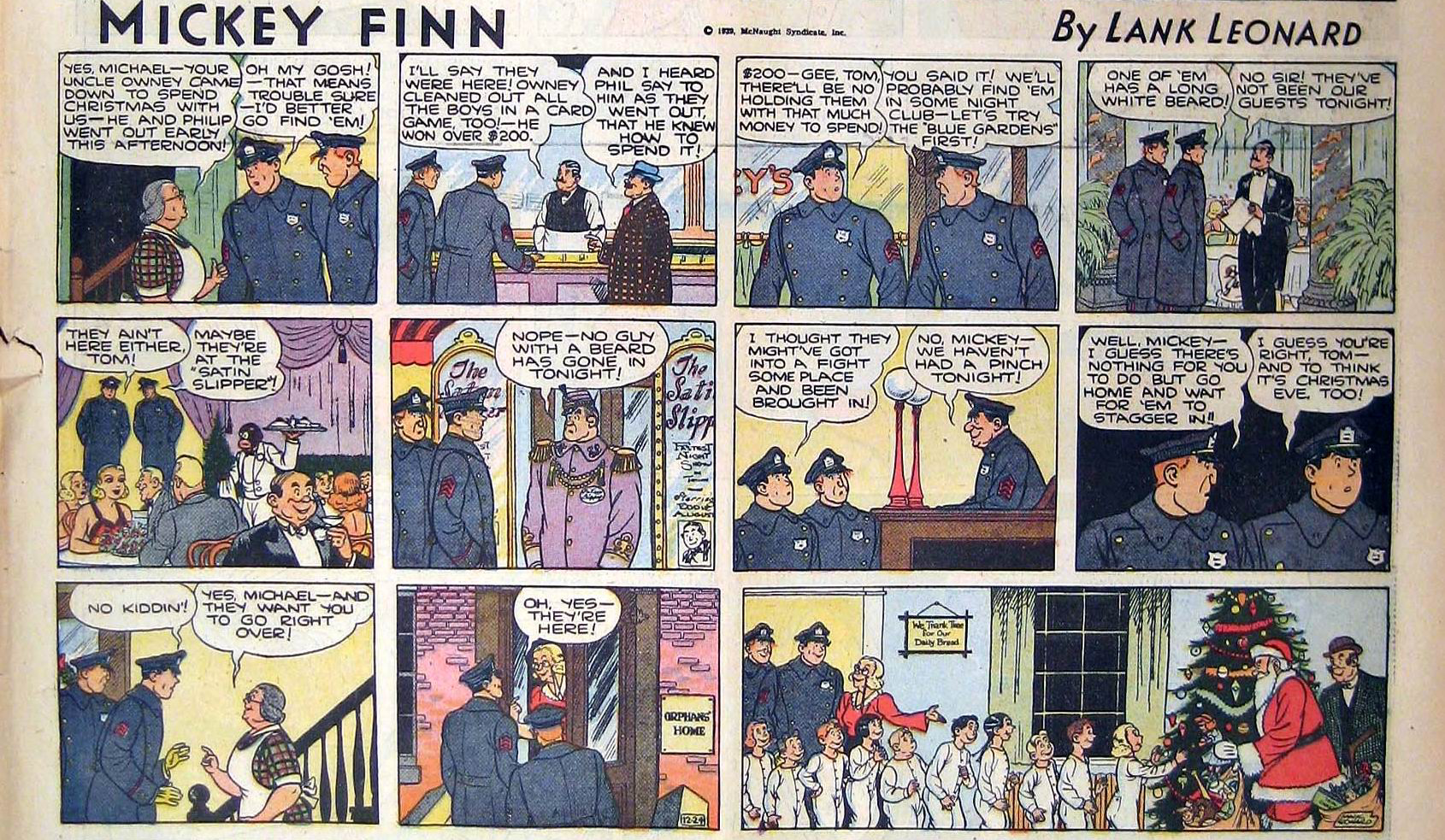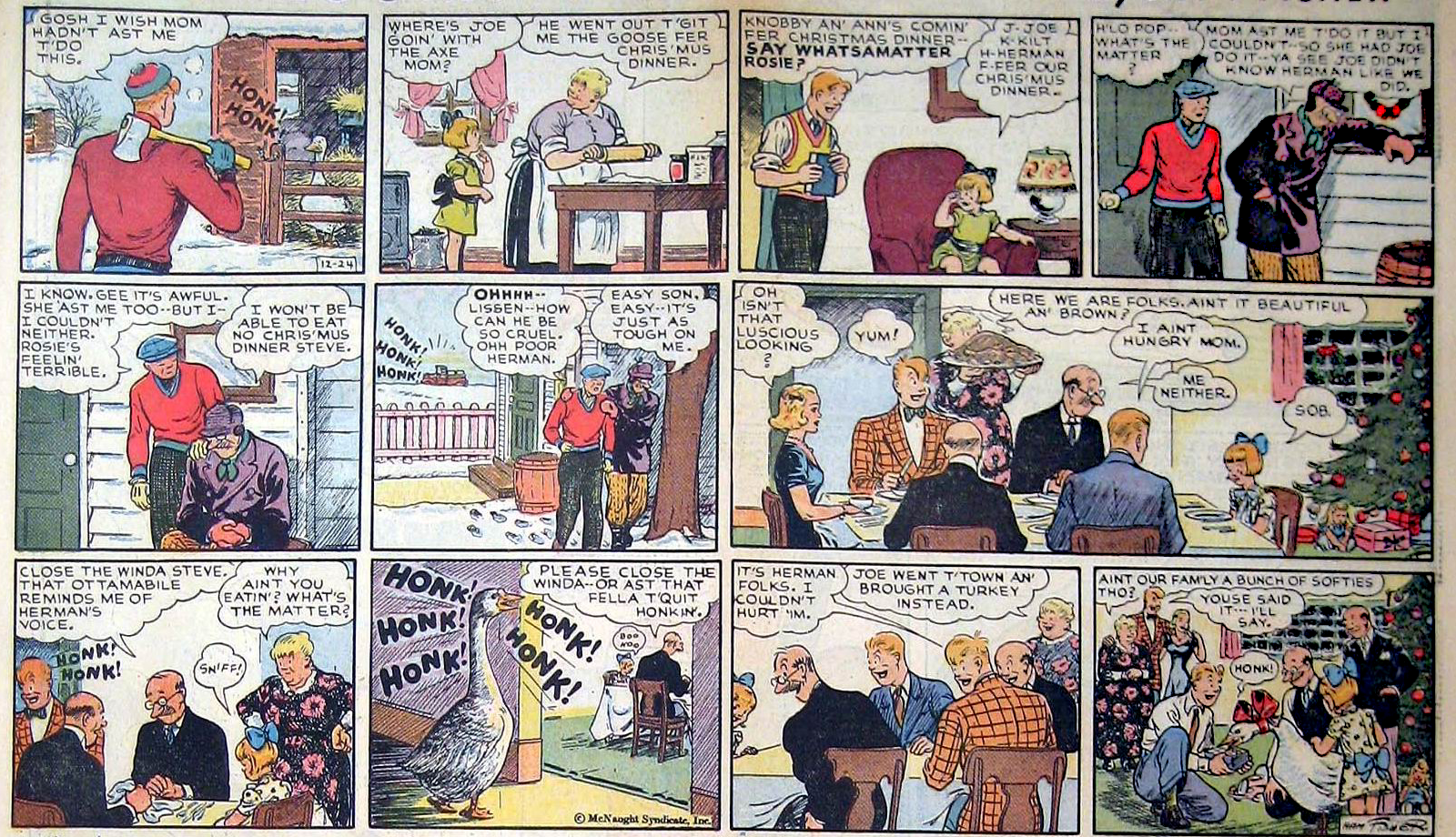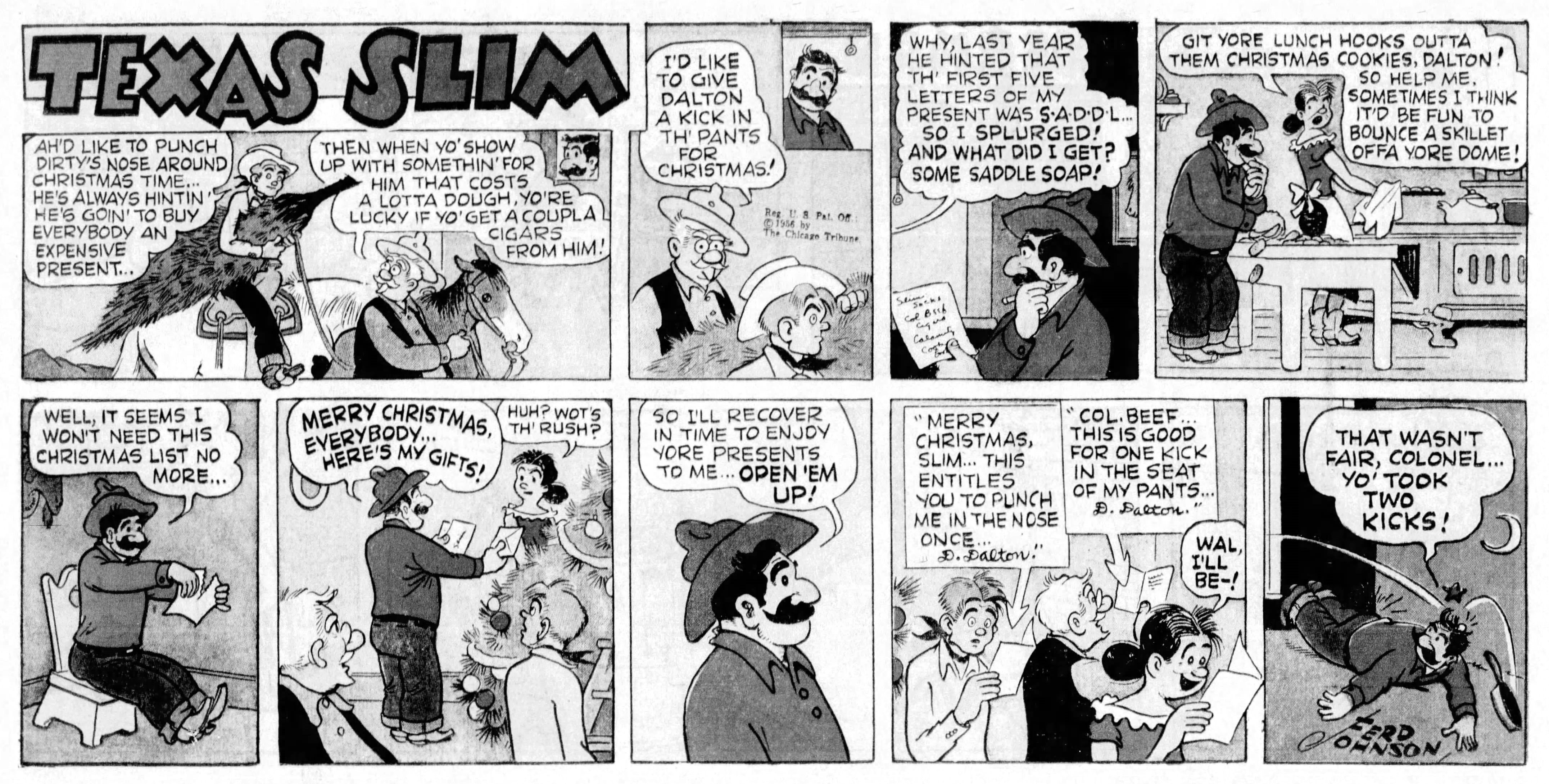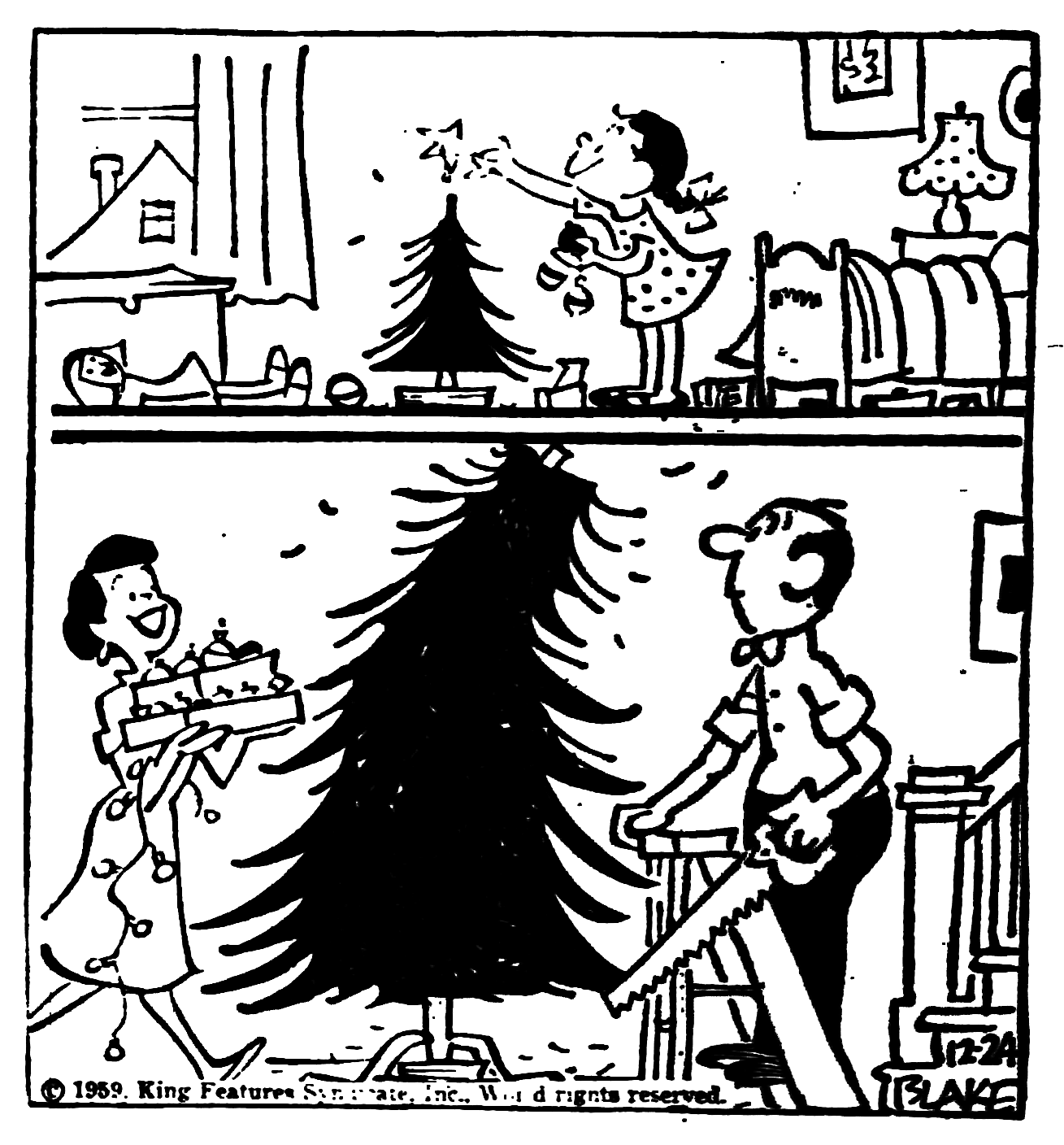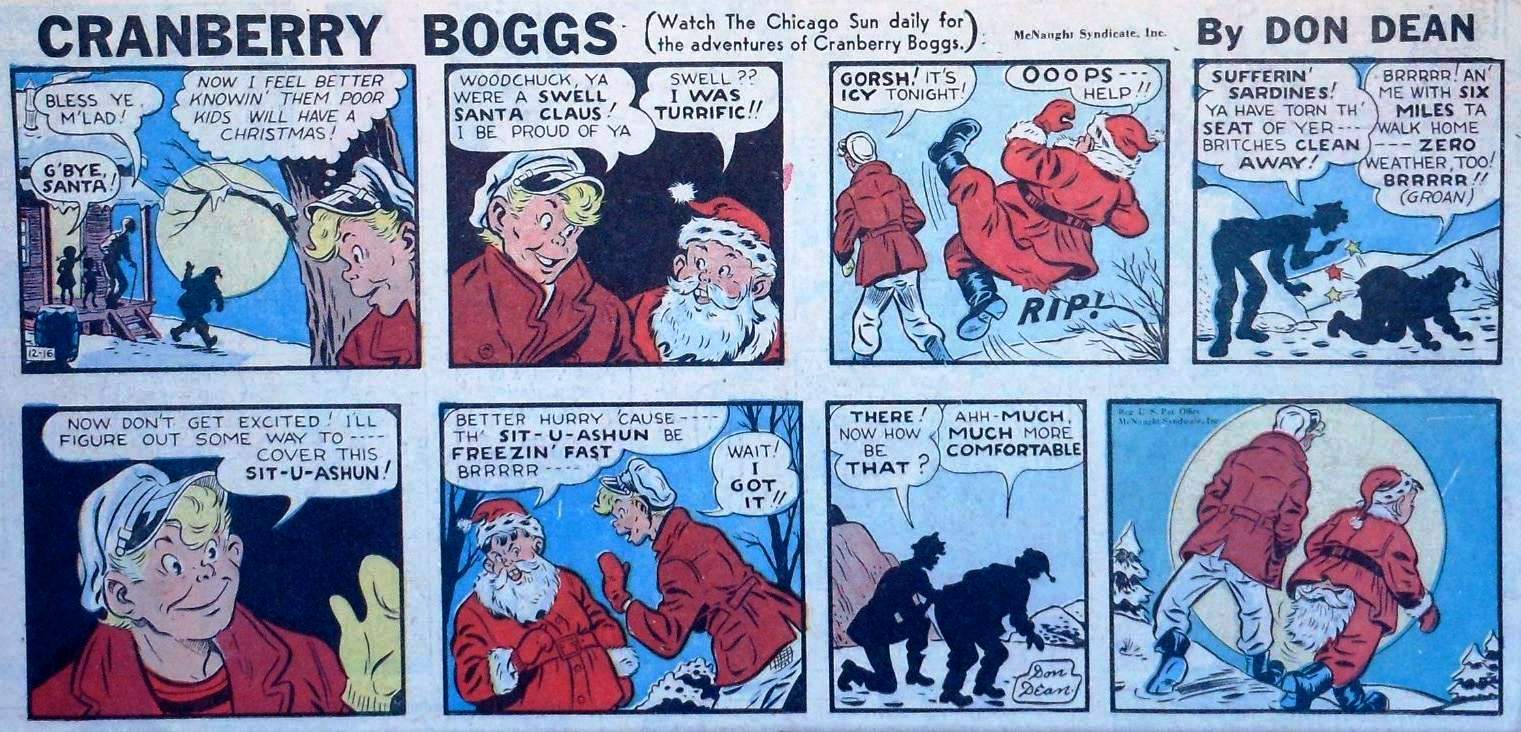Click the image to see a larger version.
I've never been much of a fan of Li'l Abner, because unlike certain other strips like Walt Kelly's Pogo which seems to actually have some respect for its Southern US swamp denizens, Al Capp always seemed to make every joke at the expense of the hillbilly folk. It felt like we were laughing at them when we should have been laughing with them. However, I think today's strip is very cute. Sure, Pa Yokum in his advanced age still believes in Santa Claus who we all know isn't real, but his belief is seen as something that should be preserved rather than ridiculed. Even for those of us who don't believe in a real, living Santa, I think continuing to talk about folkloric characters like him as if they do exist still adds something fun to the holiday season. Plus, if you're lucky, maybe you'll have a dream about meeting him.


